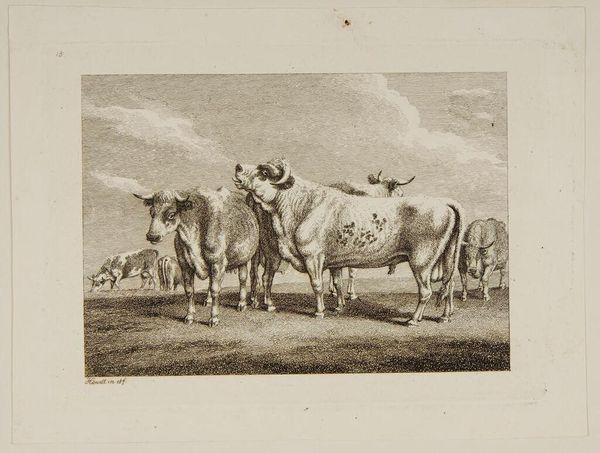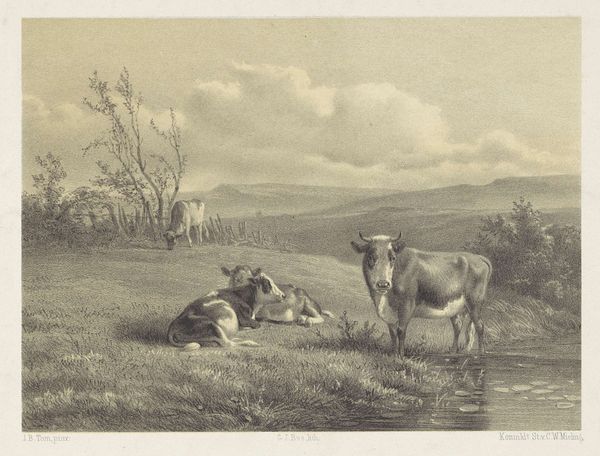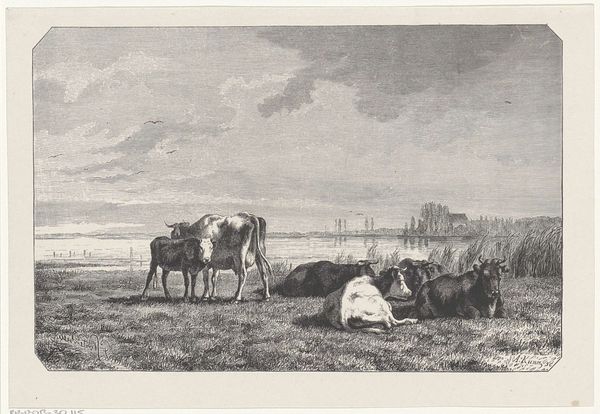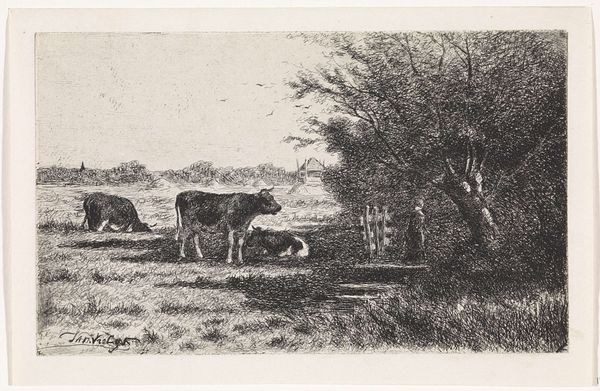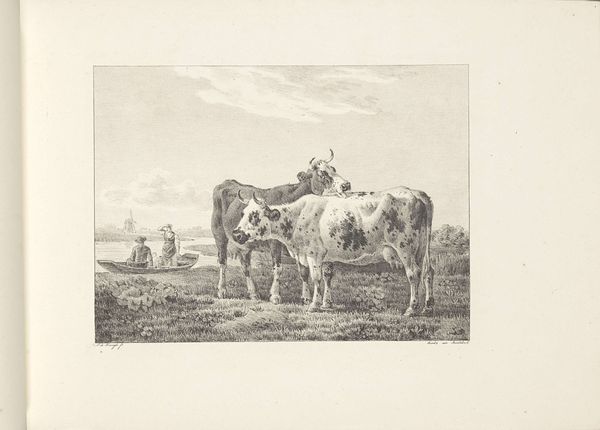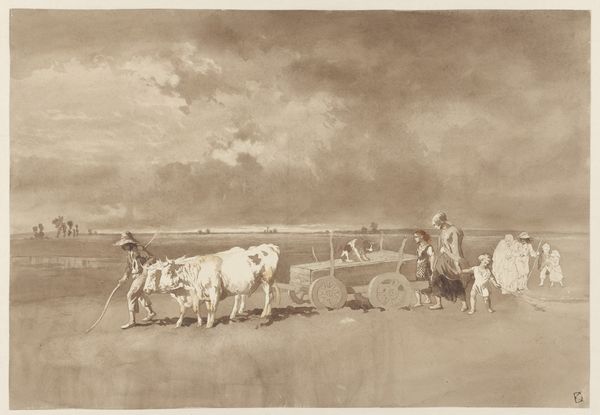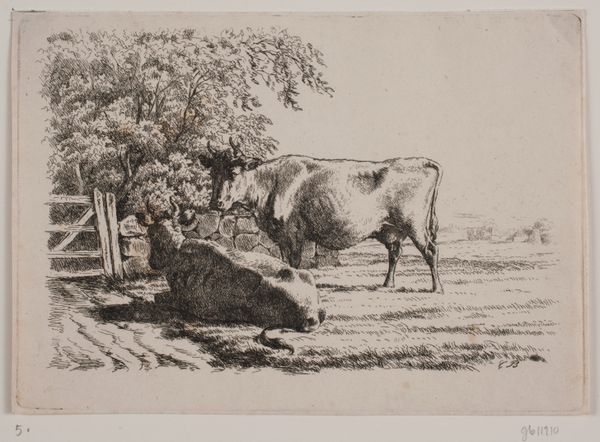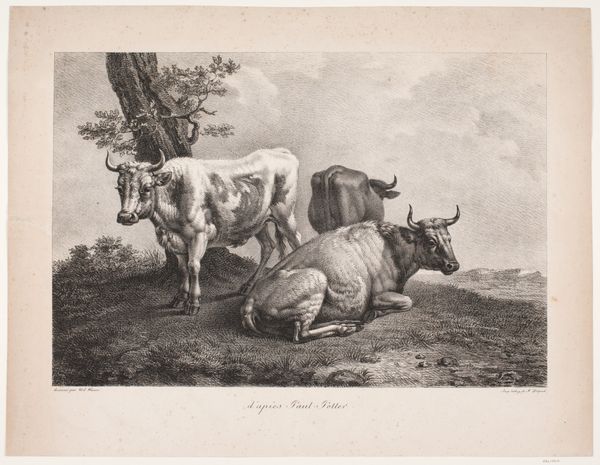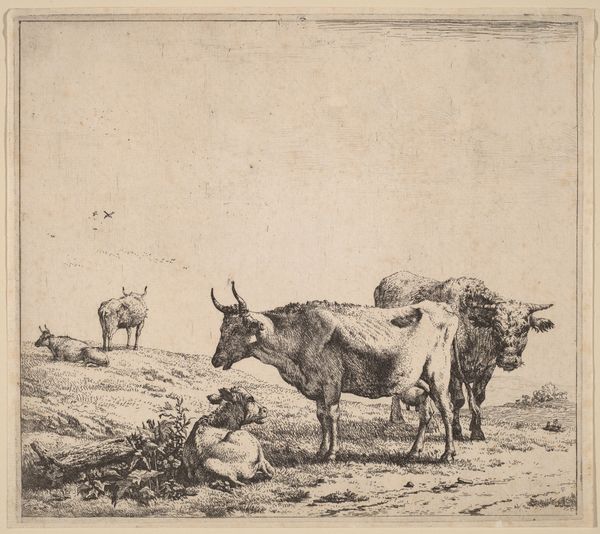
drawing, print, pencil
#
pencil drawn
#
drawing
#
light pencil work
# print
#
old engraving style
#
landscape
#
figuration
#
archive photography
#
pencil
#
19th century
#
genre-painting
#
realism
Dimensions: height 275 mm, width 385 mm
Copyright: Rijks Museum: Open Domain
Editor: Here we have Leendert de Koningh's "Three Cows in a Landscape," created in 1833. It's a pencil drawing and has a very serene, pastoral feel. What do you see in this piece, beyond just a depiction of cows? Curator: I see a reflection of the 19th-century societal values projected onto the Dutch landscape. Think about the historical context: land ownership, agricultural labor, and even the romanticization of rural life. How does the drawing position these animals within a changing social and economic order? Editor: That's interesting. I hadn't considered the economic side. The cows seem quite idealized, almost emblems of prosperity. Curator: Exactly. The "genre painting" aspect reinforces a kind of bourgeois idyll. Consider, too, the absence of human figures directly involved in their care. What does it suggest about labor and class divisions, if anything, when viewing this idealized representation of livestock as assets within a system? Editor: It does seem to subtly gloss over the realities of agricultural work. Are we meant to focus on the animals as symbols rather than beings? Curator: Precisely! The realism flirts with presenting an actual scene, but it's heavily mediated by social expectations and artistic conventions. The careful rendering of the cows might imply something about human dominion, a sort of claiming of nature. Can we read that as a power dynamic? Editor: I never thought about it that way before, but it’s clear the work embodies human relationship with animals and land during the time it was produced. Curator: And these seemingly simple landscape scenes also become artifacts documenting those complicated relationships, which shifts how we understand representation in art, even when it features cows!
Comments
No comments
Be the first to comment and join the conversation on the ultimate creative platform.
